Alaska made a splash yesterday with the release of its new “unified award chart,” which takes affect in March, 2024. This has been in the works for awhile, but it was something that many Alaska frequent fliers (and points and miles enthusiasts) had a fair bit of trepidation about. The fact that Alaska still awards miles based on distance instead of revenue, its recent history of no-notice devaluations and the addition of new partners at terrible value over the last couple of years made many of us feel like it was only a matter of time before the rug was completely pulled out. That said, now that it’s out, I’m pleasantly surprised.
There are losers to this new award chart, for sure. However, I think that it strikes a sensible balance between pricing and increased utility. It’s not as fun as the old motley patchwork of different award charts for each partner (that also created some incredible values). But, going forward, I think it will make it easier for more people to use Alaska miles more frequently and at reasonable prices.

What’s Changing
Alaska Mileage Plan has announced new award pricing starting March 2024. Previously, it’s offered separate award charts for different partners. Mileage Plan released a “combined” award chart last year, but it was really just a range of pricing that covered the collection of individual partner award charts. Now, there will be a single set of distance-based award charts that apply to all partners based on different zones of travel. A few highlights:
- Unified saver pricing: Currently, Alaska’s award chart lists prices “starting at” and so it’s impossible to know what the saver price should really be (and it’s often much higher than the starting price shown). The good news is that the “starting at” prices on the new charts will now be the exact price when saver awards are available on any partner award covered by that zone.
- Global award availability: Right now, you can only redeem Mileage Plan miles for travel for each partner within select regions. This will be changing and Mileage Plan will be opening up redemptions on all partners globally, with no geographic restrictions. This is a big (and positive) change and will create a lot of additional opportunity.
- Mixed partner awards (starting late-2024): Historically, Mileage Plan hasn’t let you mix partners on a one-way award ticket, outside of using Alaska to reach a gateway city. After that, all travel had to be on one partner alone. Later next year, Alaska will allow members to mix partners on a single one-way award ticket. This is another terrific change.
- Free stopovers continue: Alaska Mileage Plan will continue to offer a free stopover each way on international awards. I imagine domestic awards will offer the same as well, even though it hasn’t been explicitly stated.
- Cumulative distance pricing: Alaska will price awards based on the total distance flown, including connections, as opposed to using point-to-point pricing. In some cases, this will cause an award to move to another distance band, thus becoming more expensive.
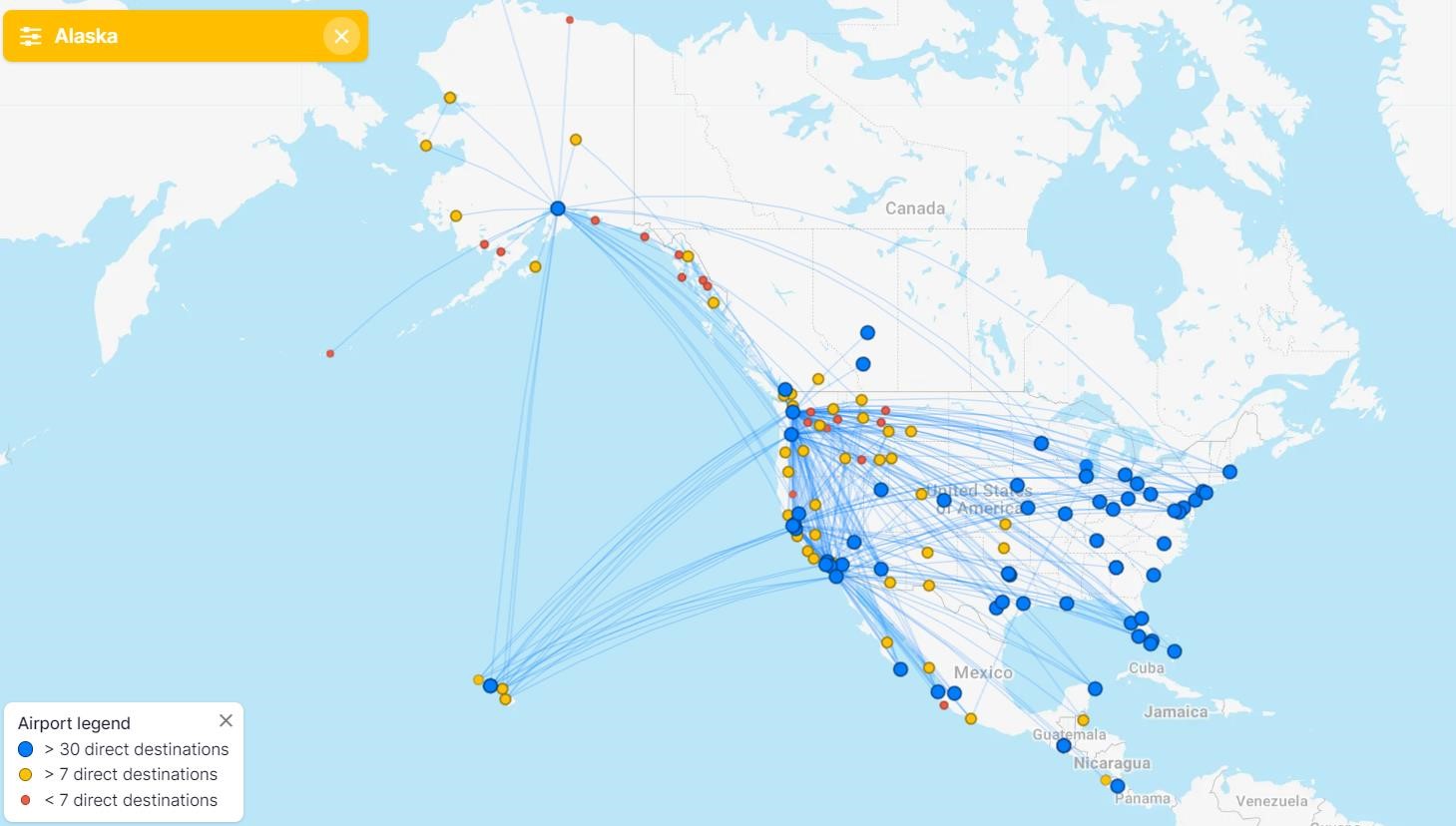
How will routing rules change?
All airlines have some sort of “routing” rules that dictate what sort of path that you can take within each direction of an award flight. For instance, most programs won’t allow you to fly from Miami to Seattle by going through Europe, even though flights exist that would make that trip possible. These rules are often explicitly stated somewhere in the terms and conditions, sometimes they’re not.
When the new chart comes out, Alaska has simply said that the routing rules will “remain the same.” It will allow you to cross a third region in route; for instance flying through and/or stopping over in Hong Kong on the way from to South Africa from the US. Problem is, because Alaska didn’t allow global partner availability or mixed partner awards, there weren’t really routing rules that governed, say, if you’re allowed to transit through South Africa when travelling between India and Europe. Any routes that it didn’t want to sell, it simply didn’t make available.
Alaska now says that award flights most follow “logical” routes. But, let me tell you, after booking Mileage Plan awards for years, some itineraries that it allows are anything but logical…and some logical routes are oddly impossible.
All that to say, Alaska’s IT isn’t always the sharpest tool in the shed. I wouldn’t be surprised to see fun possibilities that we may not be expecting. With that aside, let’s dig into the new Alaska charts.
Alaska Mileage Plan Award Charts (starting March 2024)
Alaska-only
This chart is used for all awards flown entirely by Alaska Airlines (i.e. no partner flights are included).
Americas
This chart is used for flights wholly within the Americas including Central, North, and South America, and Caribbean Islands, except when all segments are flown by Alaska Airlines. 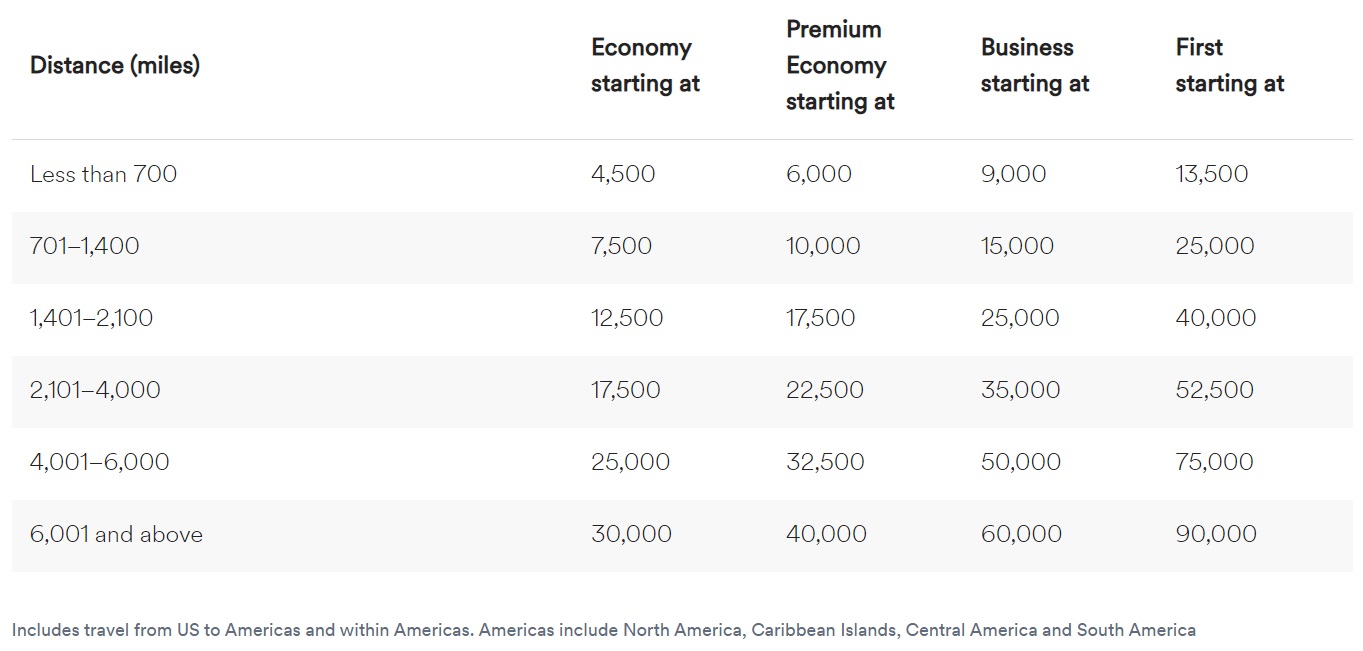
Europe, Middle East, Africa
This chart is used for all flights within Europe, Middle East, and Africa; and it includes all flights between the United States, Europe, Middle East, and Africa.
Asia Pacific
This chart includes travel from US to Asia Pacific, within Asia Pacific and between Asia Pacific–Europe, Middle East, Africa.
Alaska Award Chart Winners
Short flights and flights in economy
One of the biggest, least sexy, most useful winners on the new chart is for economy flights…especially short economy flights. US redemptions start at just 4,500 miles for flights that are less than 700 miles. 7,500 Alaska miles will get you a saver seat on any on flight in the world of less than 1,500 miles. That’s a great deal, both domestically and internationally, as shorter flights can sometimes be unusually high-priced. American Airlines’ expensive (and short) flights to the Caribbean will be one a beneficiary, as will flights within Alaska.
Short, international business flights will plummet in cost as well, especially for partners like Malaysia Airlines and Japan Airlines, whose under-1,500 miles business flights will go from 35-65K in business and 25K+ in economy all the way down to 15K in business and 7.5K in economy. Royal Air Maroc is another expensive airline for short connections that will have a a useful route map.
Alaska claims that almost 2/3 of its economy flights will be cheaper on the new charts. Looking at pricing, I’d believe it.
Europe in business from the North/East Coast from 45K
The new chart creates much more opportunity for outsized value from the East Coast to Europe and Africa, as compared to the current version that treats the entire US as the same. Here’s some examples (all prices one-way):
- Aer Lingus from Cleveland or the Northeast to Dublin – old price 60K, new price 45K. Flights from Chicago and Seattle also will be reduced to 55K.
- Finnair from the Northern US to Helsinki – old price 70K, new price 55K.
- Iberia from Boston to Spain – old 75K, new price 45K. Much of the rest of the East Coast and Northeast is still lower on both Iberia and American at 55K. This actually makes Iberia redemptions via Alaska competitive again.
- British Airway to from BOS/JFK to London/UK – old price 57.5K, new price 45K. Like Iberia, the rest of the Midwest and East prices at a slightly lower 55K.
- Singapore Air from Houston to Manchester or from JFK to Frankfurt – previously not offered, new price 55K. Singapore’s fifth-freedom flights from the US to Europe are one of the best ways to cross the Atlantic.
- Royal Air Maroc from East Coast to Casablanca (and onto Europe) – old price 100K, new price 55K (or 45K direct to Casablanca from Boston). Royal Air Maroc was one of the ridiculously bad value partners that Alaska added last year. The new chart takes it from unusable to attractive.
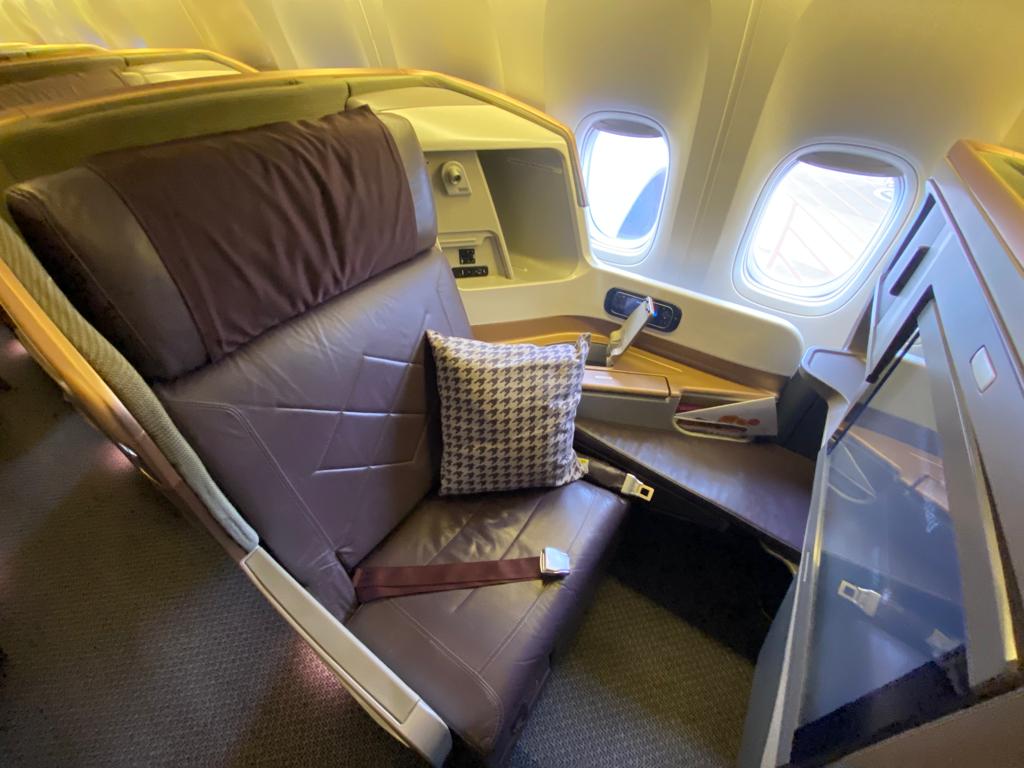
Middle East and Africa in business class from 55K
Overall, the chart to the Middle East either stays much the same or gets far better, especially given the current prices being charged for Royal Jordanian, Royal Air Maroc and El Al.
- El Al from the East Coast to Tel Aviv – old price 85K-100K, new price 70K. Flights to Tel Aviv from LAX stay at 85K one-way, without the high-season 100K pricing.
- El Al from the East Coast to South Africa – old price 120K, new price 85K.
- Royal Air Maroc from US to North Africa – old price 120K, new price 55K.
- Royal Air Maroc from US to West Africa – old price 120K, new price 70K.
- Royal Jordanian from US to Amman – old price 85K, new price 70K.
- Qatar Airways from Northeast US to Doha – old price 85K, new price 70K.
Icelandair “business class” from 30K
Icelandair has a business class that consists of the type of large recliner seats that are more frequently found in domestic US first class. Problem is, they’ve historically charged the same business class prices for those seats. Now, Alaska is going to sell Icelandair business class at premium economy pricing, which could actually make it an interesting option to consider:
- Northeast US to Reykjavik – old price 55K, new price 30K.
- Rest of US to Reykjavik – old price 55K, new price 35K.
- Connect to pretty much anywhere else in Europe for no more than 45K.
Those are decent prices for what is effectively domestic first class (although the flights are fairly short, as well).

LATAM business class to South America from 35K
This is an often-available redemption that I love. It will be slightly more expensive on most routes, but overall remains a very good value:
- East Coast to Lima – old price 45K, new price 35K.
- US to Chile, Brazil, West Coast to Chile – old price 45K, new price 50K.
Because of the relatively few hubs that LATAM has, there will be some connecting flights that bump up into the next pricing band.
Business class to New Zealand from 75K
Flights from the US West Coast to New Zealand fall just inside the 7,000 mile distance band, making them 10,000 miles cheaper than business class awards to Australia:
- Air Tahiti Nui from US to Auckland – old price 100K, new price 75K.
- American Airlines from LAX to Auckland – old price 80K, new price 75K.
Note that awards to New Zealand on Fiji Airways will also be 75K, but we’ll read about them later in the losers section.

Long, quirky routes to/from Asia/South America in business
Many Alaska partners (and not just the ones below), have some quirky routes that would make for a delightful trip. I’m especially excited to see more availability between Europe and South America on Iberia, as well as increased availability between Asia and Europe on multiple carriers. Once mixed partner awards are live, it will be a whole new world. In the the meantime, here’s a few that will drastically decrease in price come March and have some fun stopovers:
- Air Tahiti Nui from Paris to Tahiti via US – old price 120K, new price 85K.
- Finnair from Northeast US to India via Helsinki – old price 130K, new price 85K.
- Royal Jordanian from Northwest US to Bangkok via Amman – old price 120K, new price 85K.
- Malaysian Airlines from London to Perth, Tokyo or Seoul via Kuala Lumpur – old price 175K, new price 85K.
Singapore Air to Asia from 85K
Currently, Alaska charges 100K+ to go from anywhere in the US (including the West Coast) to Asia on Singapore Air. Now that will go down to 85K across the board. However, JFK-Singapore is just under the 10,000 mile limit, so adding connecting flights will pretty quickly kick it up to an eye-popping 130K one-way. In that case, it will almost always be far cheaper to book two separate awards.
Alaska Award Chart Losers
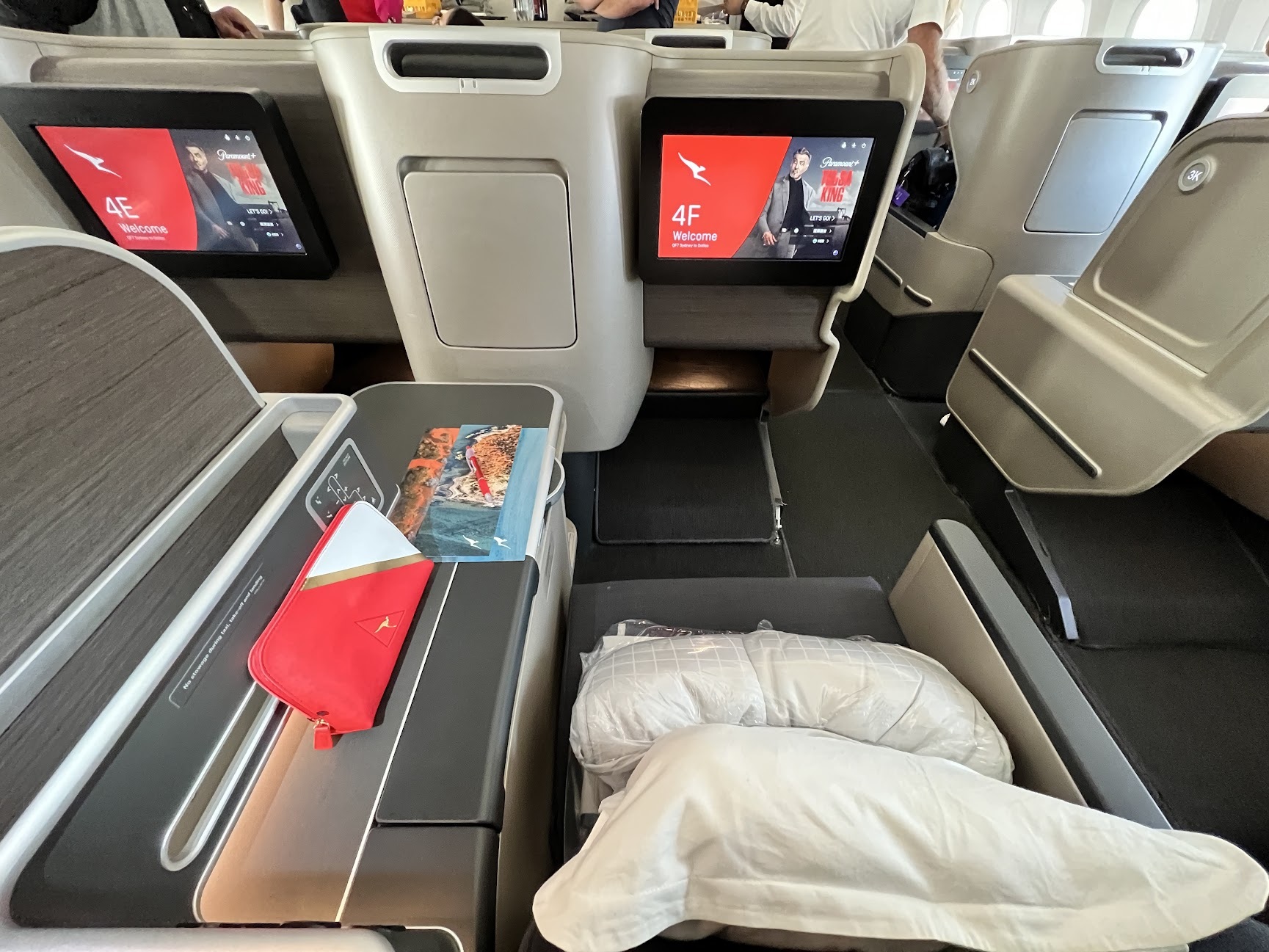
Qantas to Australia in business
Alaska currently has one of the best deals in the world with flights to and from Australia on Qantas. They’re hardly ever available, but when they are, the pricing is so low that you’d be tempted to think someone forgot about the award chart. Well, evidently someone remembered and that won’t be the case any longer starting next year:
- Los Angeles to Sydney in first class – old price 70K, new price 130K.
- Los Angeles to Sydney in business class – old price 50K, new price 85K.
I know that 85K for non-stop business between the West Coast and Australia is reasonable…it’s just a massive jump from the incredible sweet spot that it used to be.
Fiji Airways to Australia/New Zealand in business
Fiji Airways, while not quite as reputed as Qantas, often offers great availability in between the West Coast and Fiji, or onto Australia/New Zealand. Unfortunately, that 55K antipodean odyssey will soon be no more:
- US – Fiji in business class – old price 55K, new price 75K.
- US – New Zealand in business class – old price 55K, new price 75K
- US – Australia in business class – old price 55K, new price 75K.
Cathay Pacific in first and business to, well, anywhere
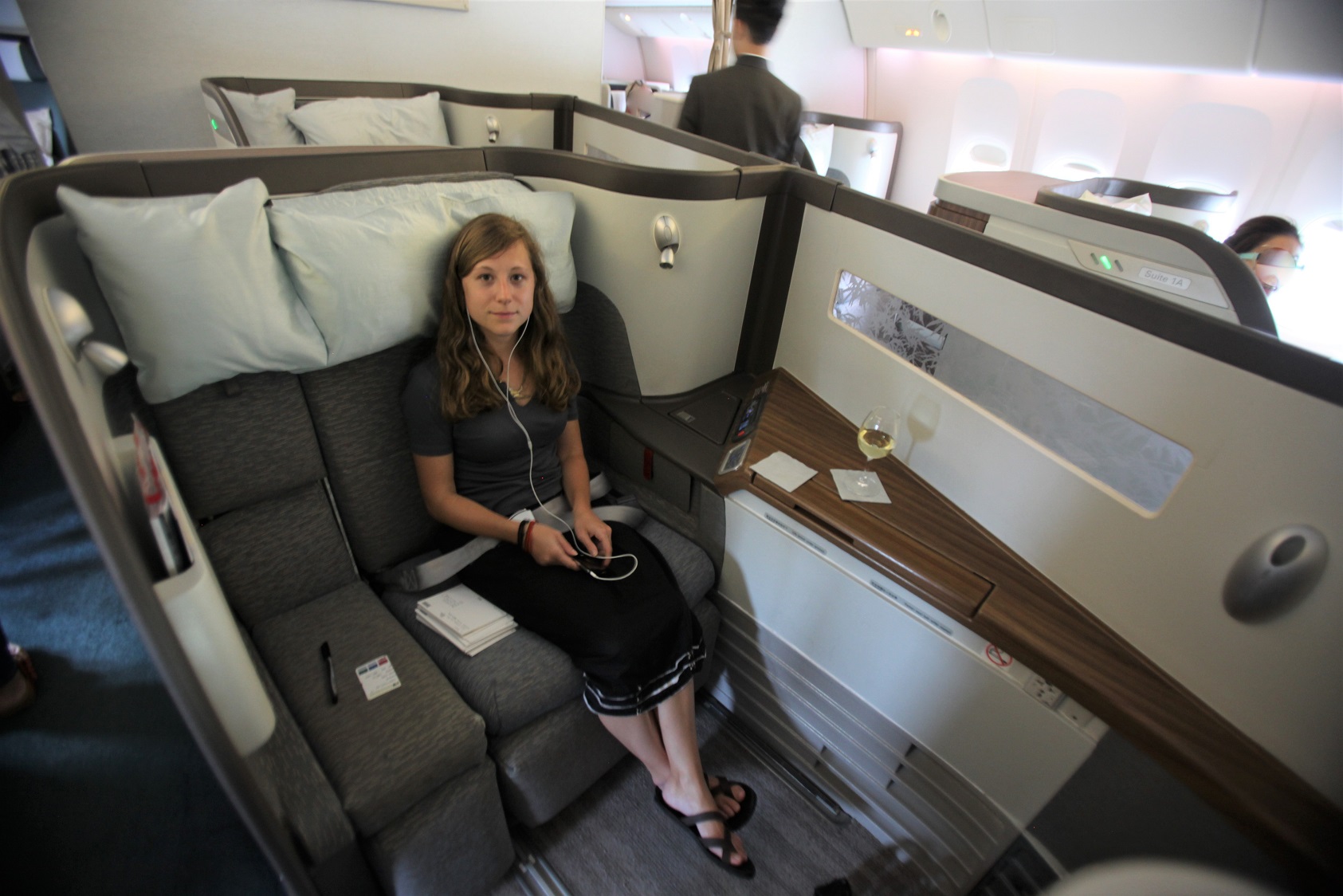
Cathay Pacific has long been an absolute steal via Alaska. The problem was finding availability. For years, you had to find it on British Airways’ website and then book it by phone. Now that you can book it online, awards are virtually nonexistent. That said, most of us believed that this was a redemption whose days were numbered. And boy, is it. We’re looking at 50%+ increases across the board:
- US to Hong Kong in first class – old price 70K one-way, new price 130K.
- LAX to Hong Kong in business class – old price 50K, new price 85K.
- JFK to Sydney in business class – old price 55K, new price 130K.
Wowza. The last of the terrific Alaska trio is another bloodbath. Again, it’s not really that these rates aren’t competitive. It’s that the old ones were incredible, and the new ones seem draconian by comparison.
From California to almost anywhere in business class
The new distance-based pricing on awards is good-ish news overall for East Coasters and basically a push for the Midwest and Pacific Northwest. Then, there’s our friends in California. Unfortunately, sitting down there in the bottom-left corner of the country means it’s a little further away…and it shows in the pricing. It’s probably the biggest loser from a geographical perspective, with increased pricing of up to 15-33% on many routes…without even taking into account Cathay, Fiji and Qantas.
- Aer Lingus from LA, San Francisco and Phoenix to Dublin – old price 60K, new price 70K
- Condor from West Coast to Frankfurt – old price 55K, new price 70K
- Condor from West Coast to Southern Africa – old price 70K, new price 110K
- British Airways and American Airlines from California to Europe – old price 57.5K, new price 70K
- Korean Air from US to Korea – old price 60K, new price 75K
- LATAM from LAX to Sau Paulo – old price 45K, new price 60K
Connecting Flights
With Alaska’s current zone-based pricing, adding connecting flights usually don’t affect the pricing, provided everything was in the same zone. So, Seattle to Doha on Qatar Airways is the same price as Portland-Seattle-Doha-Istanbul. Now, with the switch to distanced-based pricing, Alaska is counting connecting flights towards the cumulative mileage total, so adding a shorter flight on either end will sometimes push you into another distance band, making the flight more expensive.
There are worse scenarios. It’s better than British Airways, which prices each segment as a separate award, often making multi-leg trips much more expensive. There’s also some insulation given the commensurate decline in shorter flights. In some cases, it will be cheaper to book a ticket as two separate awards. However, when compared to using point-to-point distances for the total award amount, this will undoubtedly be more expensive.

Final Thoughts
It could be worse. Much worse.
In all seriousness, I’m pleasantly surprised by Alaska’s first attempt at a “unified” award chart. I don’t think that anyone thought that the Qantas, Cathay and Fiji sweet spots would stick around, and they won’t. Still, I think that the vast majority of the pricing is competitive or better with the other US programs (and Aeroplan). Free stopovers are still around and once mixed partner awards are live, their utility will be even greater. We’ll see how the rollout goes from an IT perspective, and if the global availability is as extensive as Alaska is making it sound. But, overall, I’m cautiously optimistic that Alaska has the foundation for a solid program here, and one that’s worth engaging with.



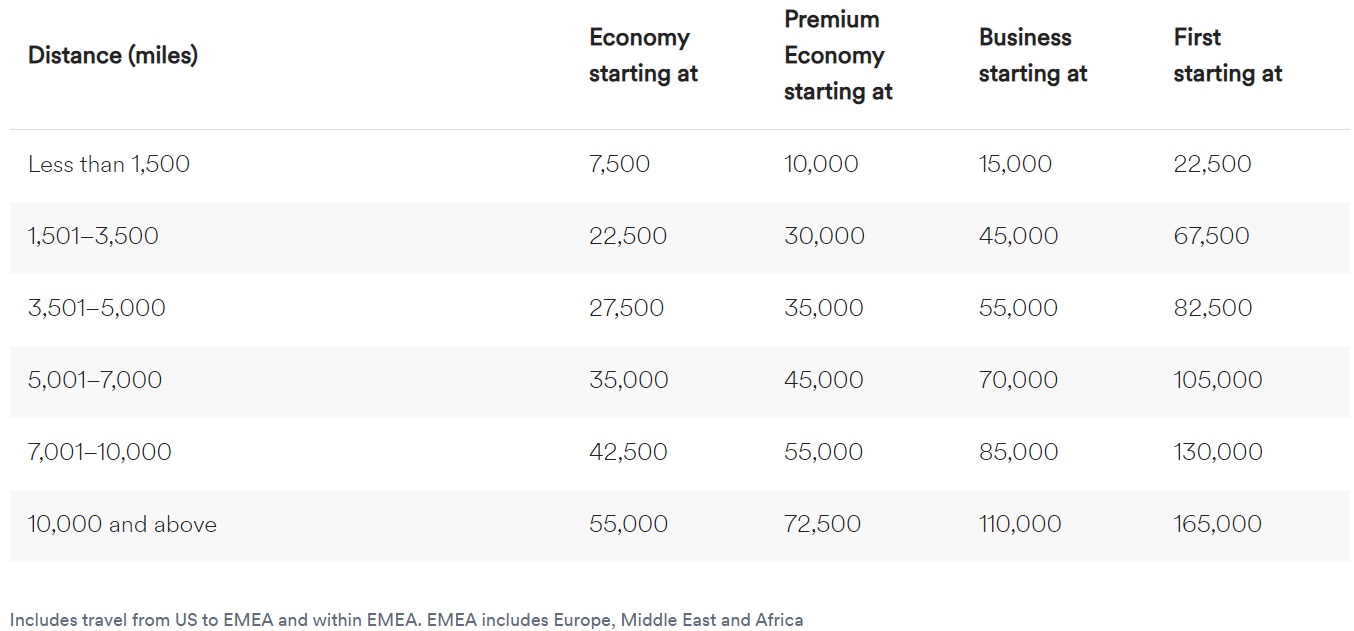
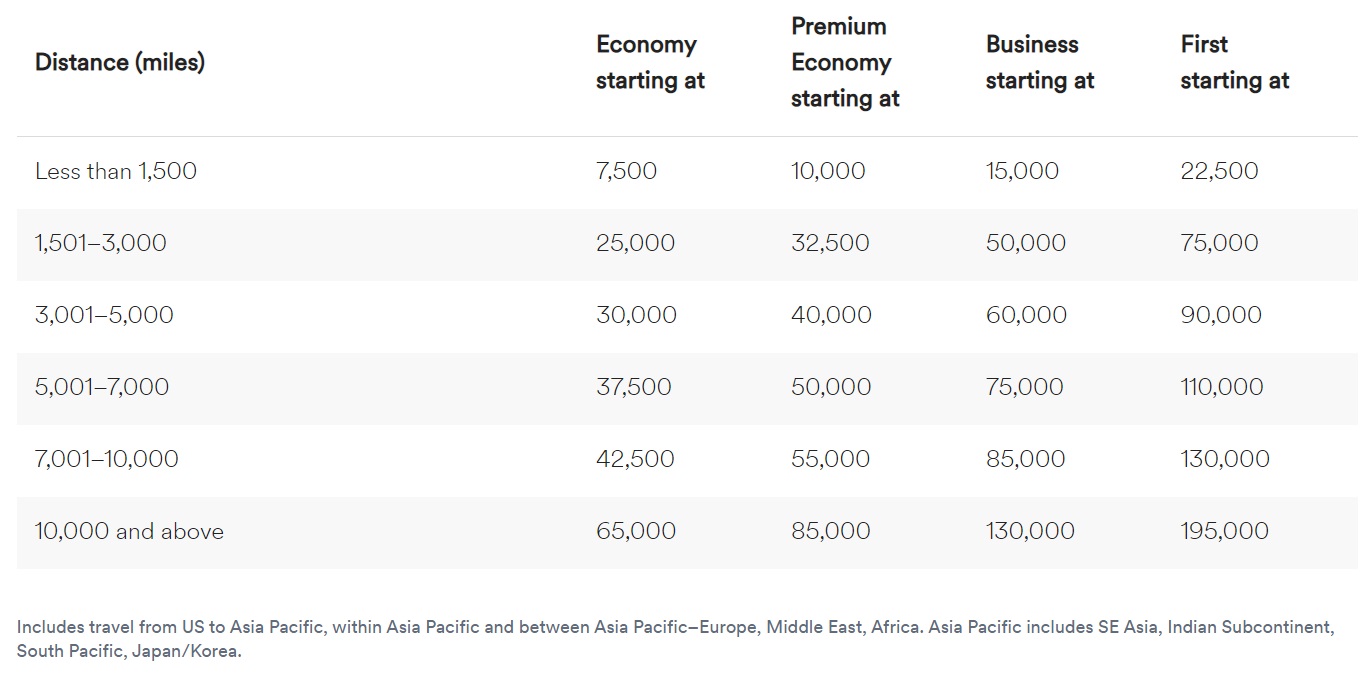



@tim how does one actually book an east coast to south africa flight? I’ve tried multi-city and both alaska website and el al websites don’t show the routing. specifically looking at ewr which in theory, el al flies to tel aviv
You can’t anymore, unfortunately. El Al stopped flying to Johannesburg in 2024, several months after this post was published.
nice article. Just approved for the 75k Alaska card. Haven’t had an Alaska card in awhile. Used up my Alaska miles last year for SQ Business regional. Looking forward to getting a good use of them now.
[…] awards in the Alaska Airlines Mileage Plan awards were obliterated after its latest enhancement: New Alaska Award Chart: Winners, Losers and Sweet Spots. As bloggers identify sweet spots, airlines go to to work plugging the […]
Never had a chance to book any of these amazing fares described here (Cathay, Qantas or Fiji). Does that mean, if I could snag something before March 2024 when they go in effect (for flights until March 2025), I could still get in on the old award rates, or should the travel also be within March 2024?
book by end of march ’24 for flights up to 11 months out, assuming you can find award space. zero for cx so that sweet spot is as good as dead already unless CX miraculously opens up space to partners.
qantas has sparse availability at times.
Thanks for teaching me a new word – antipodean.
Excellent article. As a PNW native I always appreciate your perspective and look forward to your articles Tim.
To me the biggest concern with this change is the comparative difficulty to accumulate Alaska miles than say an Aeroplan. It’s just harder to gather 170k miles for two to fly than it was to accumulate 110k for two.
[…] Miler covers some additional trips that simply drop in price using the new […]
“starting at” means we have to wait and actually see what pricing on the routes will be. Those 280k Aer Lingus tickets will hopefully disappear, but it sure isn’t guaranteed. I’m still in the skeptical bucket.
The 280K Aer Lingus tickets won’t disappear, nor will the 170K Qatar tickets. Those are part of the “expanded” availability that Alaska has with some partners, where they get access to additional, non-saver seats when there is no saver availability (as opposed to other partners of Aer Lingus, for example, who only see the saver seats that Alaska has priced at 60K).
The difference now isn’t that those higher-priced awards will go away, it’s that all partners in that region/distance band will have the same saver award pricing. So, Iberia, Finnair, Aer Lingus and British Airways will now have the same 55K saver awards on flights of 3,500-5,000 miles between the US and Europe. Currently, one is 75K, one is 70K, one is 60K and the other is 57.5K.
Appreciate the additional info. I suppose a high price is better than no price, but who in their right mind is spending that kind of miles on those tickets.
I have that same thought all the time.
You’re right to be skeptical. Planning a trip to India for next February. I hoped we could do PHL-Doha on Qatar for 70K one-way in Business (taking Tim at his word), and then just buy the DOH-DEL flight, but when I got on the site to price it out, PHL-DOH was 255K one-way (on AA) and JFK-DOH was 150K. I called AK and the rep was a bit mystified, but evidently the sky’s the limit for these non-Saver awards. The 70K seats are nowhere to be found. He looked 90 days in both directions and did not find one seat at that price. I wish they just showed Saver seats so we wouldn’t waste our time trying to find inventory that doesn’t exist at reasonable prices. I ended up booking JFK-Delhi in Virgin Atlantic Premium Economy for 35K one-way. I can burn some Virgin miles and wife can tolerate Prem Economy. BTW, Qatar dropped to PHL flights so now that route is on AA, in case you Philly people were hoping to fly in QSuites. Fugeddaboutit.
The ultimate question is will there be award availability on the flight you want?
That is a question, indeed. The global availability and mixed partner awards will open up a bunch of possibilities, because there will be many more connecting and transit options. Having insanely-priced partners like Royal Air Maroc become usable will open up more as well. That said, it doesn’t really matter what price Qantas or Cathay Pacific saver awards are priced at if we never actually see saver awards.
AT no longer flies to/from BOS, I’ve been checking.
One frustrating aspect is the absence of saver awards on AA. I am not even looking for J. Totally fine with Y for short domestic flights. While AS will also offer non-saver awards, I suspect the pricing will not be competitive for these short hops to US/Caribbean
Great analysis right to the point. Thank you Tim!
Great post! Thanks Tim.
Instead of making West Coast redemptions better – they got worse. Great way to appreciate the Alaska west coast flyers.
Tale as old as time.
It is great for short distance flights up and down the West Coast, but not for the longer flights.
Disappointed that you did not mention the severe devaluation to Korean air redemptions or California-based Japan Airlines redemptions
California gets hit hard in a lot of these distance-based categories. You’re right, 25% increases on JAL and Korean are another example of that (although not nearly as severe as what happened to Fiji, Qantas and Cathay redemptions).
Exactly right, and unlike CX, these have been readily available, especially <2weeks out. I recently took BKK-HND-SFO all in F (JL has/had a 777 on the HND-BKK route, which I wasn’t expecting) for 100k AS. Now that will be “starting at” 130k, so a 30% increase MINIMUM, and we all know what that means. This is an absolutely crushing deval, it now has AS miles well behind AA in utility, which should honestly never happen.